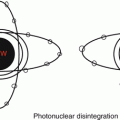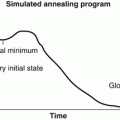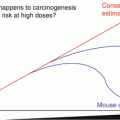, Foster D. Lasley2, Indra J. Das2, Marc S. Mendonca2 and Joseph R. Dynlacht2
(1)
Department of Radiation Oncology, CHRISTUS St. Patrick Regional Cancer Center, Lake Charles, LA, USA
(2)
Department of Radiation Oncology, Indiana University School of Medicine, Indianapolis, IN, USA
Tumor Control Probability (TCP) Curves
A TCP curve is created by plotting some measure of tumor control probability against the total dose.
This may be done with clinical or experimental data, or with theoretical models.
Even when plotting clinical data, a theoretical model must be used to model the response of tumor cells to radiation therapy.
See Chapt. 21 for details of single-target and linear-quadratic models.
A TCP curve is characterized by a sigmoid shape, in which there is little dose-response at very low or very high doses, and a steep dose-response at intermediate doses.
Calculation of TCP
Assuming that a single clonogenic cell is capable of reproducing an entire tumor, the probability of tumor control is equal to the probability that no clonogenic tumor cells are present.
Using simple Poisson statistics (see Chapt. 21), if there are an average of X clonogenic tumor cells present, tumor control probability is equal to e −X .
Rule of Thumb: To achieve a certain TCP, you should aim for a tumor cell survival of (1 – TCP).
So to achieve 90 % TCP, you need a tumor cell survival of 0.1 tumor cells per patient.
This means that if you start out with 10 9 tumor cells, you need to achieve a surviving fraction of 10 −10 .
Factors Affecting Shape and Slope of TCP Curves
The slope of a tumor control probability curve is known as γ.
γ is a ratio of absolute change in response probability to relative change in dose.

(27.1)
At γ = 2, a 1 % increase in dose will increase TCP by 2 %.
As demonstrated in this graph, γ is highest near the middle of the TCP curve (Fig. 27.1
Stay updated, free articles. Join our Telegram channel

Full access? Get Clinical Tree








